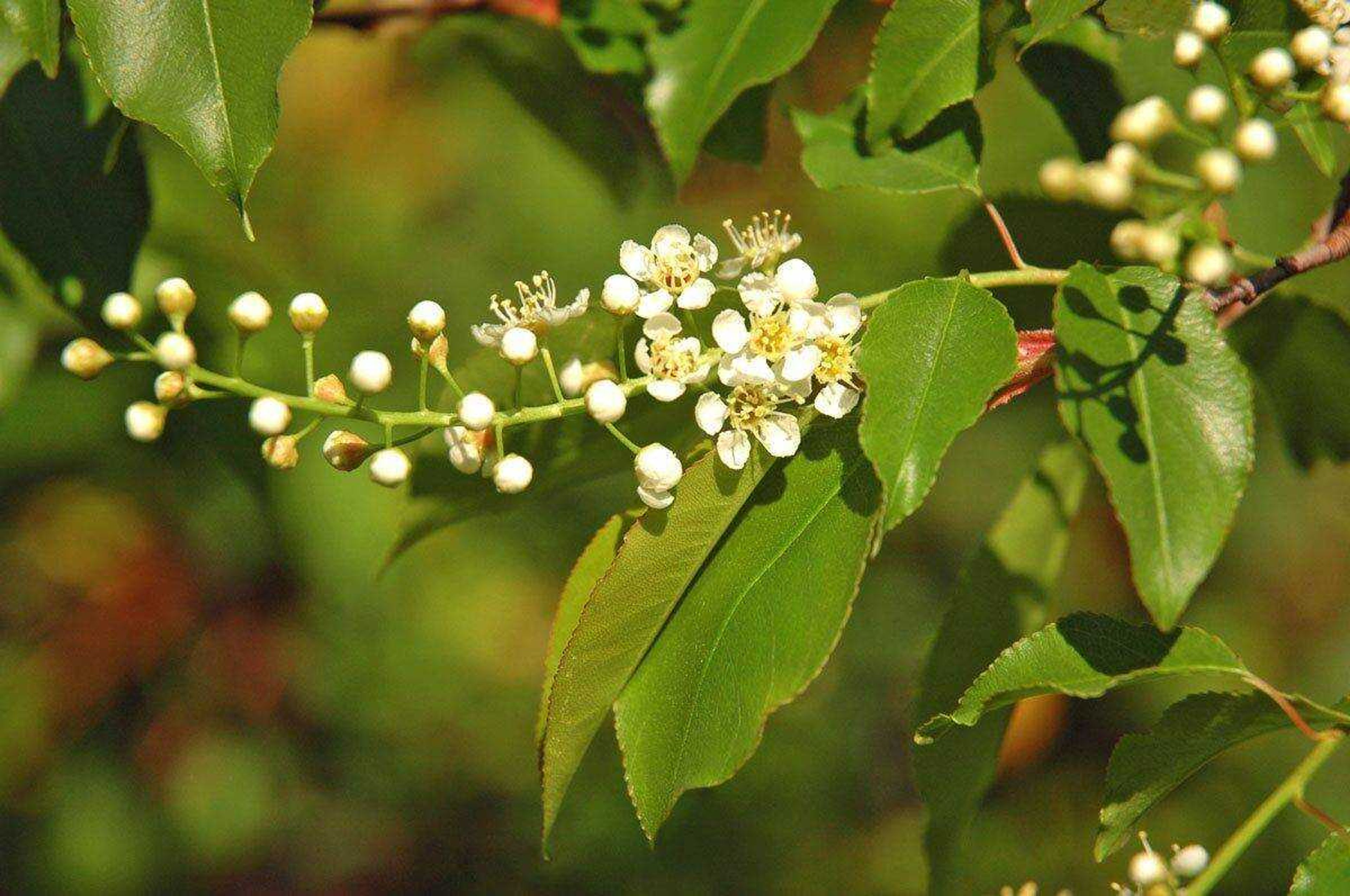Native to the eastern half of the U.S. and parts of Mexico, the wild black cherry tree can grow to more than 90 feet tall. Lumber from the black cherry is valued for its deep red color and dense grain. Cabinets made of black cherry are durable and expensive.
Wilted leaves from this tree can cause serious illness if eaten by livestock. Its leaves and seeds contain a compound that turns into hydrogen cyanide after being eaten by animals.
In this photo you can see the difference in the configuration of blossoms of the wild black cherry compared to domesticated cherry tree blossoms. Several blossoms extend on individual small stems attached along a main axis stem of the wild black cherry. At the base of the axis stem a few leaves also will grow. Flowers at the base of the axis stem will bloom first, well before the buds at the axis' end. Common domesticated cherry trees do not sport axis stems.
A wild black cherry tree may live to be more than 200 years old.
Through the Woods is a weekly nature photo column by Aaron Horrell. Find this column at semissourian.com to order a reprint of the photo. Find more work by him at the Painted Wren Gallery.
Connect with the Southeast Missourian Newsroom:
For corrections to this story or other insights for the editor, click here. To submit a letter to the editor, click here. To learn about the Southeast Missourian’s AI Policy, click here.










